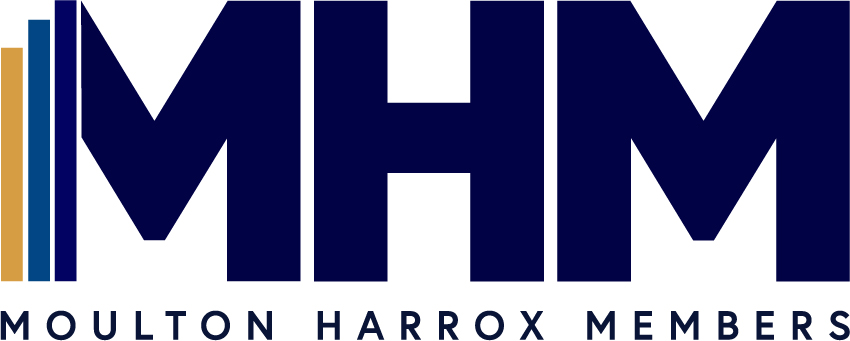- This topic has 2 replies, 1 voice, and was last updated February 28, 2024 at 7:20 am by
 Nick Hargrave.
Nick Hargrave.
-
CreatorTopic
-
December 4, 2023 at 3:01 pm #5810
 Nick HargraveKeymaster
Nick HargraveKeymasterNASDAQ listed. Ticker: ASPI
Market cap: $94mWe believe that ASPI is one of the most interesting ‘picks and shovels’ plays In relation to isotope enrichment both for nuclear fuel, nuclear medicine and other key sectors in the future. The company was incorporated just 2 years ago with quite a complex back story about how they took control of their South Africa manufacturing assets and IP (detailed extensively in their prospectus). The summary investment case is based on their proprietary laser-based technology (Aerodynamic Separation Process) for enriching isotopes that was developed over 20 years in South Africa which allowed for significant innovation given the country wasn’t subject to international atomic standards. Enriched isotopes are one of the most constrained and complex supply chains in the world and the market has historically been dominated by Russian supply, a situation that the Western world is urgently seeking to alter. ASPI believes its isotope enrichment facilities using their proprietary technology can be constructed at a fraction of capital cost and time vs. traditional isotope separation facilities and can be small and modular in design to allow for additional capacity and expansion.
Whie there several isotopes and end markets that the company is targeting, we will focus on the 2 most imminent – nuclear medicine (Carbon-14 and Molybdenum-100) and nuclear fuel (Uranium-235). The company is completing its first isotope enrichment plant in Pretoria, South Africa this year and has signed two supply contracts with North American customers for greater than $11.5m in expected aggregate revenue for future supply of Carbon-14 and other highly enriched isotopes, proving that their technology is commercially viable and scalable. These agreements have the potential to generate cash flow in 2024, in addition to the $9m equity raised at $0.91 per share in Oct-23. The company aims to construct additional plants outside of South Africa in locations such as Iceland where they can benefit from more advantageous energy costs. The company is in negotiations with commercial partners and the business model under discussion is based on JVs where ASPI provides the technology and expertise while the partner provides investment capital and ensures security of supply at discounted prices. This approach limits the cash needs and potential dilution.
Carbon-14 is used for radiolabeling, a scientific technique used to track the passage of a molecule through the body. The executed agreements noted above allow for the production of Carbon-14 in quantities to meet the entire global demand. Molybdenum-100 a stable isotope used in ASPI’s conversion process to produce Technetium-99, used for Single Photon Emission Computed Tomography (SPECT) scanning, a type of nuclear imaging test that shows how blood flows to tissues and organs. Technetium-99 has a half-life of 6 hours and current isotope conversion processes used by peers to produce it utilise Molybdenum-99, which has a half-life of 66-hours. These half-lives highlight how complex the supply chain needs to be for this isotope, with ASPI’s stable isotope process giving it a significant competitive advantage. These are just 2 examples where the company’s technology could lead them to dominant market positions.
The more ‘mainstream media’ opportunity is using their technology to produce HALEU (High Assay Low Enriched Uranium). They recently formed new U.S. and U.K subsidiaries called Quantum Leap Energy (“QLE”) and have signed 2 MOUs with Small Modular Reactor (“SMR”) companies to collaborate on developing HALEU production facilities. In a world that we believe is starting to recognise that carbon neutrality can’t be achieved without nuclear energy, SMRs are widely viewed as the future of nuclear power. They provide many benefits over the nuclear power stations constructed of the past, such as greater deployment flexibility and designed for production-line manufacturing, requiring limited on-site preparation to substantially reduce construction times and provide considerably lower construction costs. Most new SMRs require HALEU which is up to 19.75% in the U-235 isotope vs LEU (Low Enriched Uranium) historically used in nuclear reactors which is typically enriched by up to 5%. Currently, there is no Western producer of HALEU, and the NEI (Nuclear Energy Institute) estimates that there will be a global demand of 3,000 metric tons by 2035. Discussions with SMR companies assume that there will be significant financial support in the construction of HALEU production facilities, with QLE expected to be the majority shareholder in these third-party funded facilities. The financial model is expected to be similar to the strategy being employed in other isotopes. However, to be very clear, the company is still developing its proprietary laser-based technology to produce HALEU at a cost of production substantially below other enrichers, but it is not yet proven and there will clearly be significant regulatory hurdles to developing and constructing uranium enrichment facilities, particularly for US supply.
In conclusion, we believe the company has potentially disruptive technology in highly compromised supply chains which could prove very valuable if the business can execute on its plans from the current early stage of the company. Currently, isotope supply is almost totally controlled by Rosatom State Nuclear Energy Corporation, the Russian state-owned entity, and a small number of state-owned or controlled enrichers. The United States Department of Energy (DOE) and other Western governments identify isotopes as critical materials and ASPI is aiming to become a key Western supplier. The current valuation reflects optimism over the technology, recent agreements/MOUs showing commercial progress and the potential scale of a HALEU production business. However, the valuation is perhaps ahead of the current financial progress on nuclear medicine isotope agreements (expected to generate single digit $m EBIT in the next 2 years) while HALEU production is not expected to start generating revenue until at least 2027. Despite their JV strategy for funding additional facilities, these may not pan out entirely as desired and there is funding / dilution risk until the company is self-funding. We are, therefore, monitoring the business closely and looking for either a catalyst to fully justify the current valuation or an opportunity to add to the Model Portfolio at a more attractive price. As more financial and commercial information becomes available, we will look to model out reasonable projections to drive a more informed view on valuation.
-
CreatorTopic
-
AuthorReplies
-
-
February 28, 2024 at 7:20 am #6040
 Nick HargraveKeymaster
Nick HargraveKeymasterhttps://ir.aspisotopes.com/news-events/press-releases/detail/26/asp-isotopes-inc-provides-update-on-plans-to-spin-out-its
https://ir.aspisotopes.com/news-events/press-releases/detail/27/asp-isotopes-inc-announces-proposed-offering-ofAnnouncement of nuclear fuel spin out as promised by mgmt, quickly followed by a $20m convertible offering. The company continues to execute its plans at pace
-
January 16, 2024 at 1:53 pm #5946
 Nick HargraveKeymaster
Nick HargraveKeymasterReplay of a recent presentation with the CEO giving additional colour
-
-
AuthorReplies
- You must be logged in to reply to this topic.

